A Better Bulb: The 3 Colors of Light and Why They Matter! (The Secret to an Insta-worthy Space)

Are you guilty of committing this cardinal lighting sin? When replacing your light bulbs, do you just go down the aisle, grab the first one you see, and call it good? A bulb is just a bulb, right? Not. At. All. In fact, choosing the right color temperature bulb can make all the difference between creating a lackluster or luminous space. 🤩
Let’s get you going on the bright path… 🕶️
 Color Temperature
Color Temperature
Most lighting products come in a range of color temperatures and varying hues of white. Correlated color temperature, or CCT, is a term used to describe how warm or cool the color of light appears. Light temperature is measured in Kelvins (K), and its scale ranges from 1,000K to 10,000 K.
To help give you a visual, the light from the sun at midday (at the equator) is about 6000K and appears very bright blue-white, while at sunset, the light is around 2500-2700K and emits a very warm amber glow. Generally speaking, Kelvin temperatures for residential applications are between 2500K and 4500K. Warm light is anything 3000K and below, while cool light is 4000K and above. Between those colors, at around 3200K, it is considered neutral, which can look either warm or cool depending upon nearby furnishings and other lighting conditions.
Kelvin (K) Temperature Range:
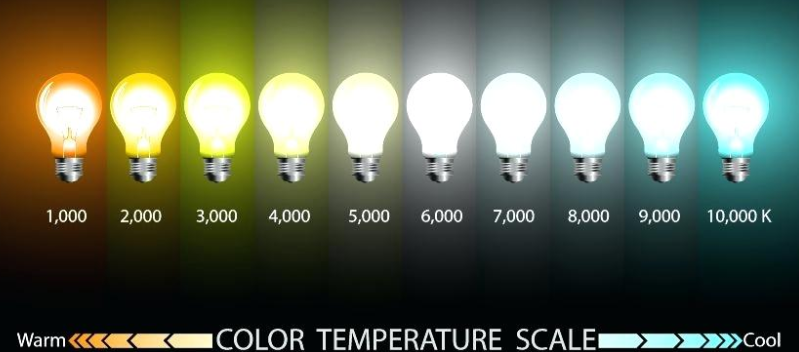
2200-2700K: a warm light, great when used in ambient lighting, often referred to by some vendors as “candlelight.”
3000-3200K: a soft white light perfect for kitchens and bathroom vanities where detailed tasks are performed.
4000-4500K: a bright white light ideal for workspaces, garages, and home gyms.
5000K and higher: a bright bluish light primarily found in commercial applications, hospitals, etc.
PRO TIP: Color temperatures 4000K and above are very bright with a bluish cast and are best used in commercial applications- it’s way too harsh for a home’s interior. One exception is task lighting in a garage workshop or something like that, where bright lights are helpful or necessary. 🔨
Lumens
The higher the lumen level, the brighter the amount of light, regardless of color temperature. Lumens are the output or the amount of light a bulb produces. We typically think of the brightness of a bulb in terms of wattage; however, wattage actually references the amount of energy needed to operate the bulb. The lumens scale measures the brightness of a bulb and should be factored in when choosing the correct bulb for your space. If you are performing detail-oriented tasks, you want as high a lumen level as you can get.
Using Color Temperature in Your Home
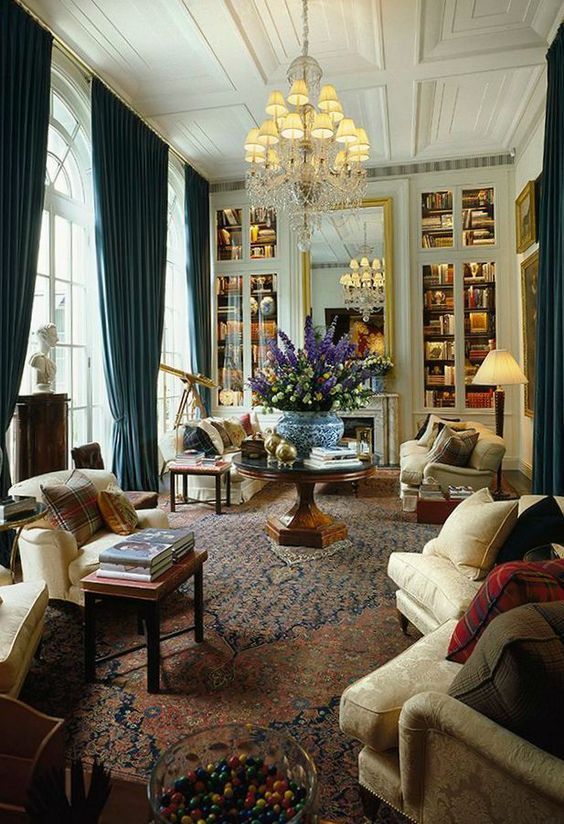 So, how do you know if you need cool, neutral, or warm? That will depend on how you plan to use the light, which room it’s in, your geolocation, as well as the overall vibe you want to create in your space.
So, how do you know if you need cool, neutral, or warm? That will depend on how you plan to use the light, which room it’s in, your geolocation, as well as the overall vibe you want to create in your space.
A few things to consider when selecting the right light temperature are the colors of your walls, floors, and furnishings. If your home mainly consists of colors on the cool side of the spectrum, like blues, greys, blacks, and crisp whites, then a neutral light temperature (approx 3000K or 3200K) is likely the ideal choice for pairing well with your decor.
Likewise, if your home has many natural materials like warm-toned hardwoods, cabinets and furniture, woven rugs, and furnishings in creams, tans, reds, or oranges, then warm to neutral light temperatures will be your best bet.
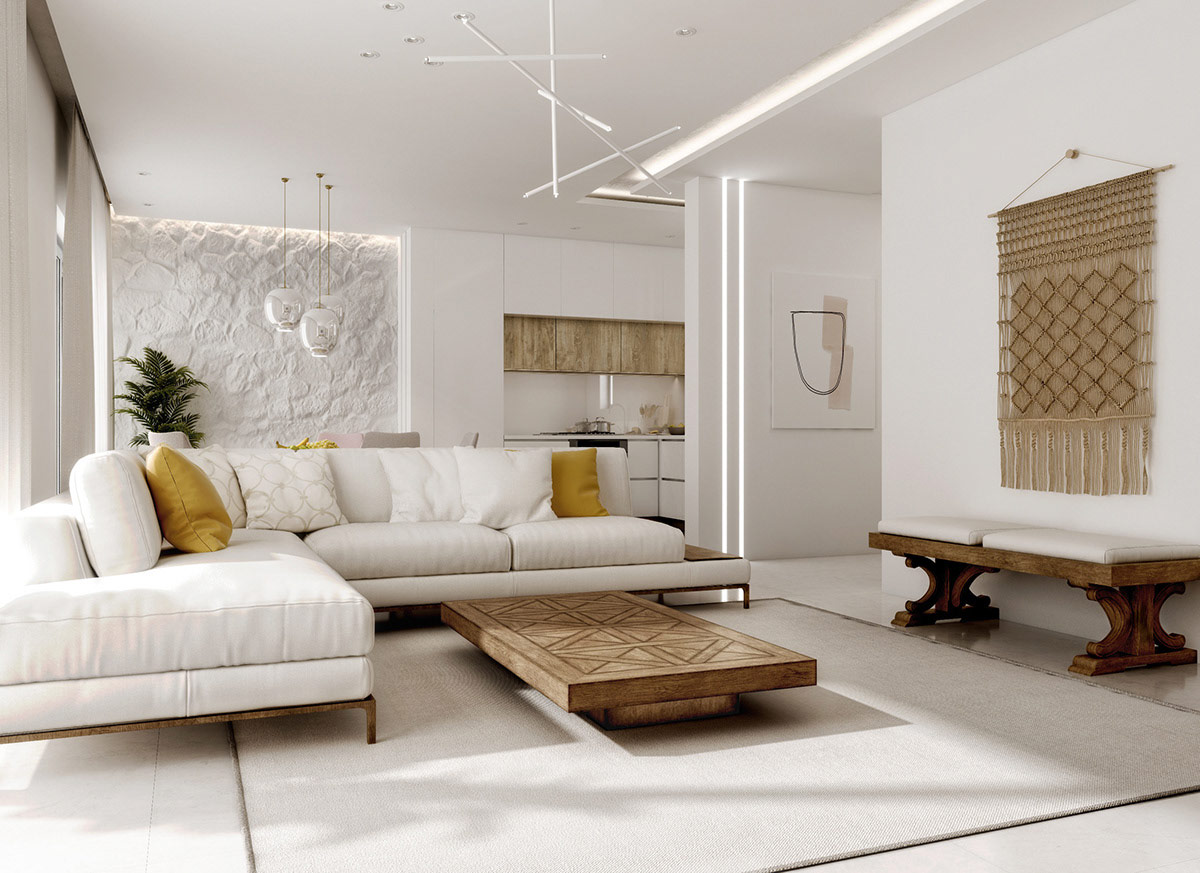 Another thing to consider is the design style of your home. Traditional and Transitional style homes typically look best around 2700K warm white light because it gives off a glow very similar to candlelight, which is reminiscent of classic houses. Keep in mind that this applies to decorative fixtures (like floor lamps, table lamps, sconces, chandeliers, and pendants) as opposed to ambient lighting, which all need to be around 3000-3200K.
Another thing to consider is the design style of your home. Traditional and Transitional style homes typically look best around 2700K warm white light because it gives off a glow very similar to candlelight, which is reminiscent of classic houses. Keep in mind that this applies to decorative fixtures (like floor lamps, table lamps, sconces, chandeliers, and pendants) as opposed to ambient lighting, which all need to be around 3000-3200K.
The clean lines and simple design of Modern and Contemporary homes generally look best with either balanced whites or a neutral-toned light, but keep in mind that for specific spaces, like the bedroom, warm light temperatures will still be the best choice.
Let’s talk a bit more about that…
Temperatures by Room
Before we get into the room-by-room breakdown, there is something you must know: dimmers aren’t just a bright idea; they are a MUST. The ability to dim can immediately transform a space and create ambiance; plus, it gives you much more flexibility to accommodate your day-to-night lighting needs. Dimming also saves energy and extends the life of your fixtures and bulbs.
Note- If you have ceiling fixtures that are LED, you will need to get dimmable wall switches that are specific to LED fixtures. They may be a little more pricey, but they are worth every penny.
By the way, if you have a plug-in lamp that doesn’t have a dimming switch- you can buy a dimmer switch for it at a home supply store.
BEDROOM
For a relaxing atmosphere that allows you to rest, unwind, and ahem…set the mood, 😉 keep the lights warm and at low brightness.
Recommended color temperature: 2500-3000K
BATHROOM
Because the bathroom is a space where we perform various tasks, whether it’s detail-oriented like applying makeup and shaving or relaxing in a deep soaking tub- either way, the light needs to be both functional and flattering.
Keep the light cooler and brighter so it remains functional, but remember, a bright bathroom can quickly transform into a serene spa thanks to your handy-dandy dimmer switch.
Recommended color temperature: 3000-3200K
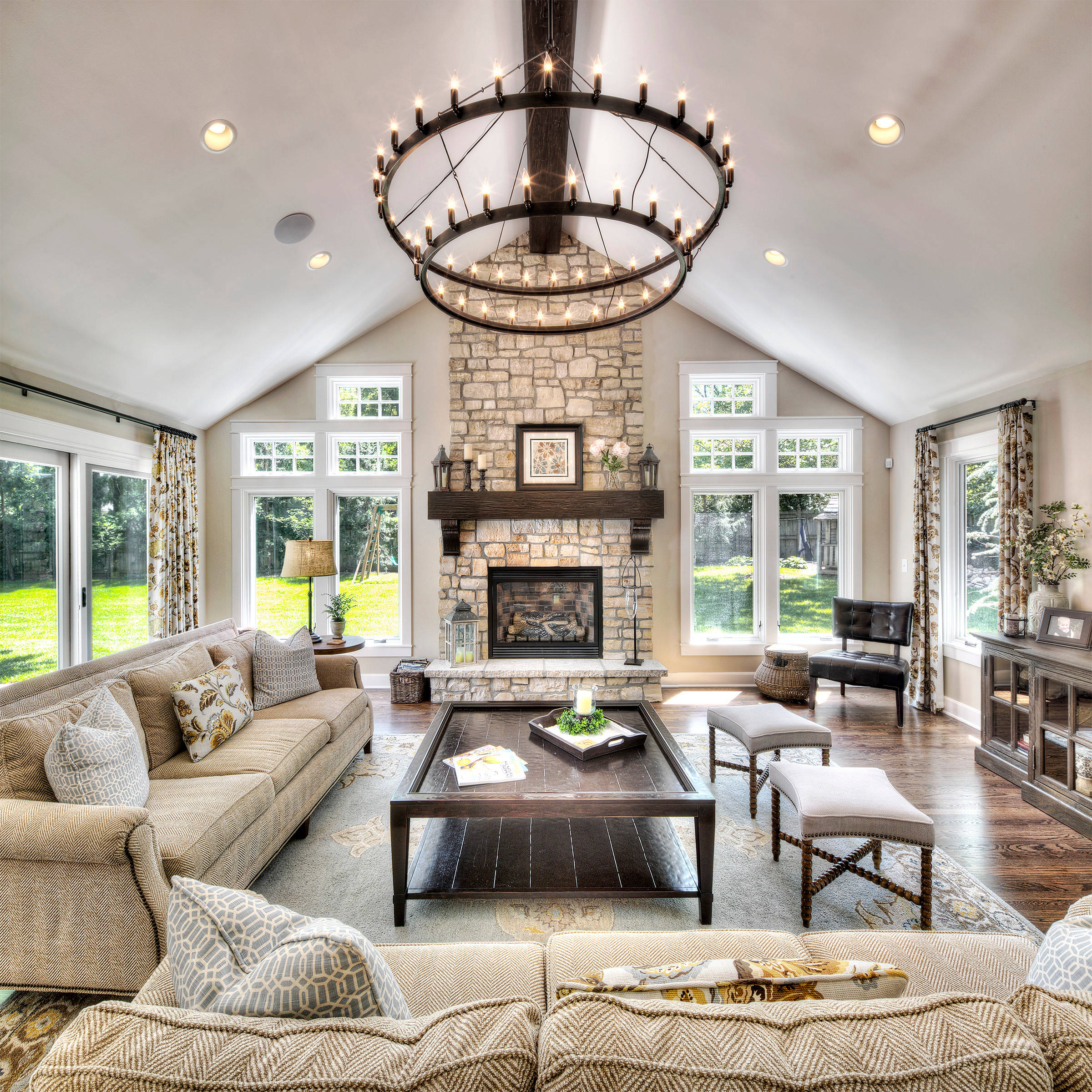 LIVING ROOM
LIVING ROOM
Another multipurpose space, you want to create an inviting atmosphere that you’ll want to kick back in that’s also perfect for entertaining.
Again, the dimmer comes in handy when setting the mood for anything from game nights to movie marathons. 🍿
Recommended color temperature: 2700-3000K
DINING ROOM
You’ll want lighting that’s a balance between creating a mood while also being bright enough to see what you’re eating. Have we mentioned how essential dimmers are yet? 😆
Recommended color temperature: 2700K – 3000K
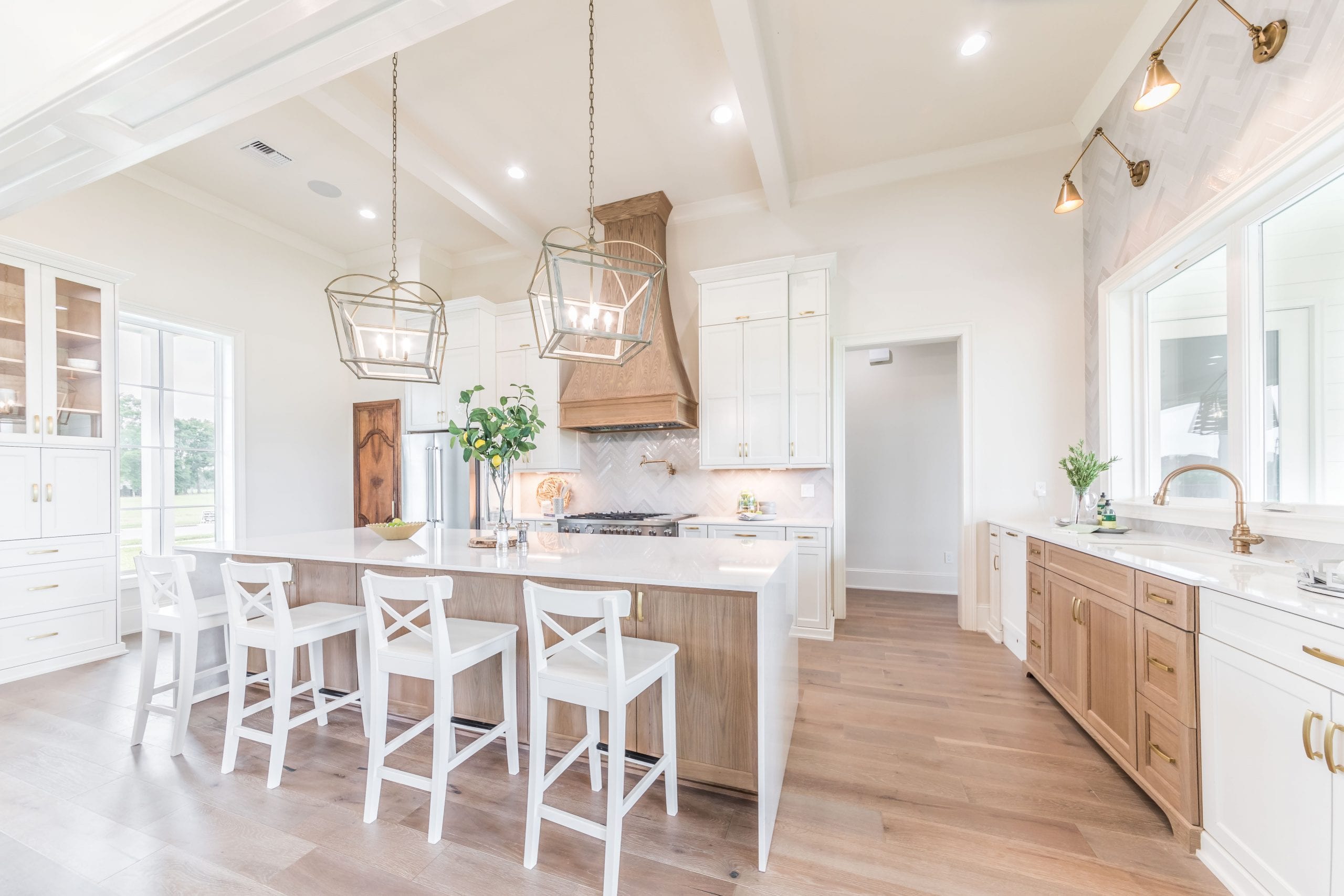 KITCHEN
KITCHEN
Kitchens are another versatile space, so the color temperature can vary. A fail-proof neutral 3000K white will look fantastic no matter what.
PRO TIP: Make sure all the different sources of light in the kitchen (ceiling, under-cabinet lighting/task lighting, and over the island) are the same color (Kelvin). This will keep your schematic color story cohesive.
Recommended color temperature: 3000-3500K
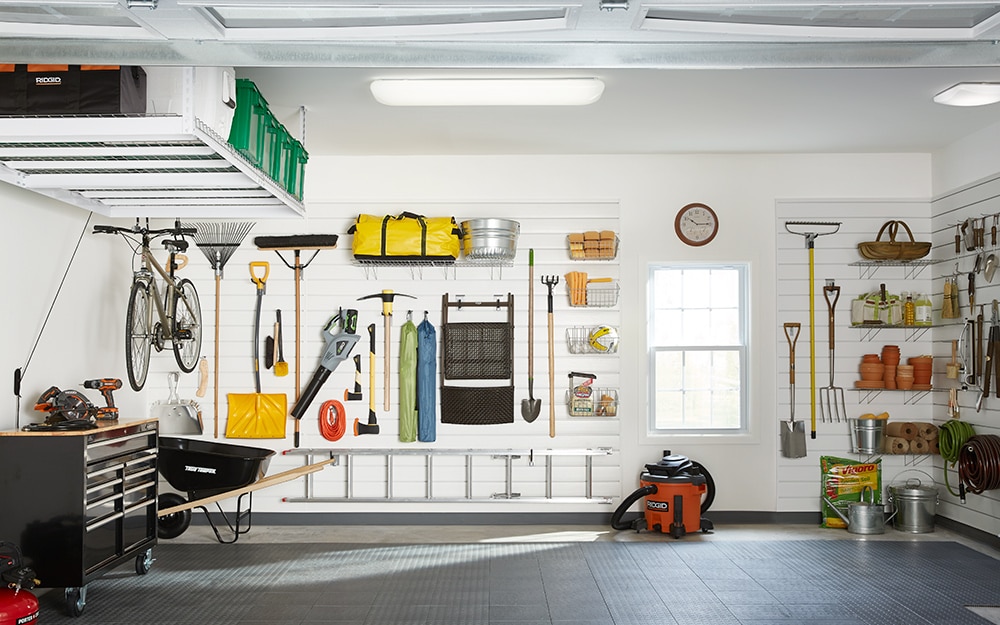 WORKSPACE / GARAGE
WORKSPACE / GARAGE
To stay productive and focused, you’ll want a light that’s bright and functional. 4000K may be a good choice for a workspace/garage or a home gym that you use primarily during the day.
However, if you get enough daylight coming from your windows, then go with something warmer, so it’s suitable for the evening.
Recommended color temperature: 3000-4000K
There you have it! You’re ready to create a lighting scheme that will be on point from day to night! Now go set the mood!
What’s that you say? You’ve got your lighting scheme all dialed in, with at least 3 sources of light for each space? Groovy! If you don’t have a clue as to what we’re talking about, allow these brilliant resources to enlighten you:
Get the Glow Down: The 3 Types of Lighting Your Home MUST Have and Choosing the Right Lighting for Your Home
In a shopping mood? Hop on over to The Store for our personal lighting picks!
2 thoughts on this post
Leave a Reply
You must be logged in to post a comment.

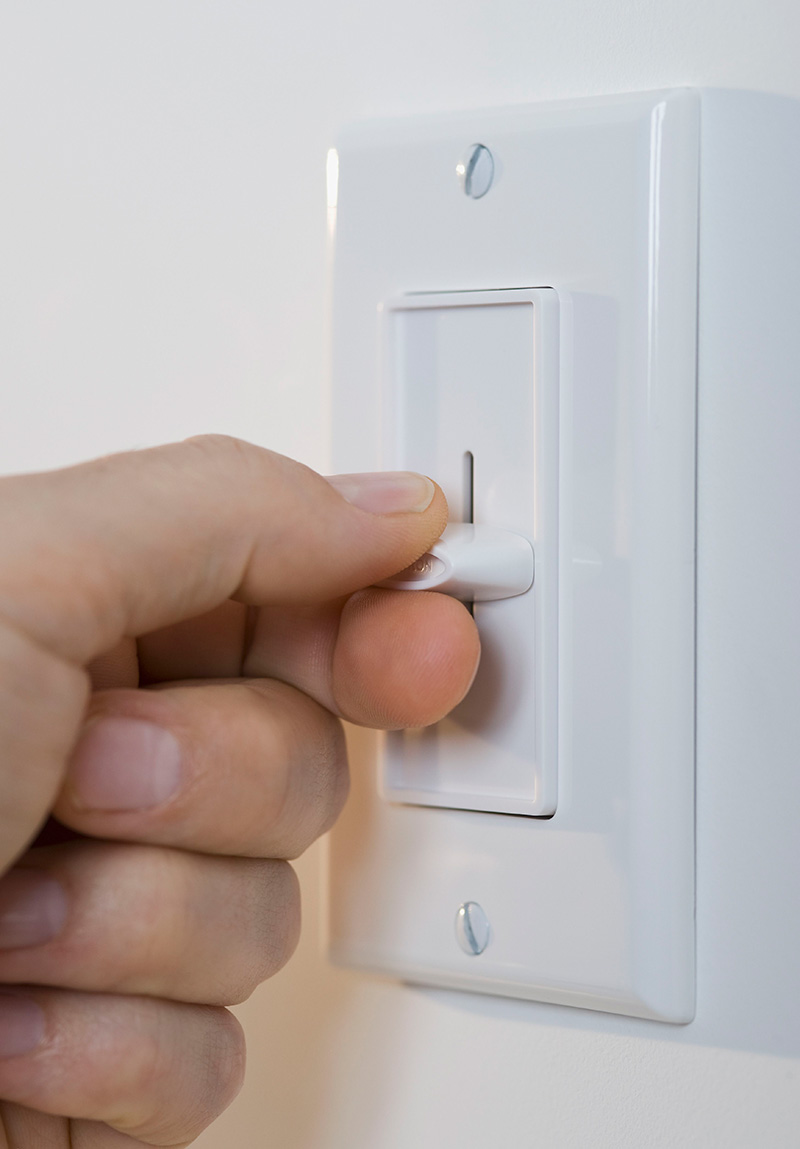
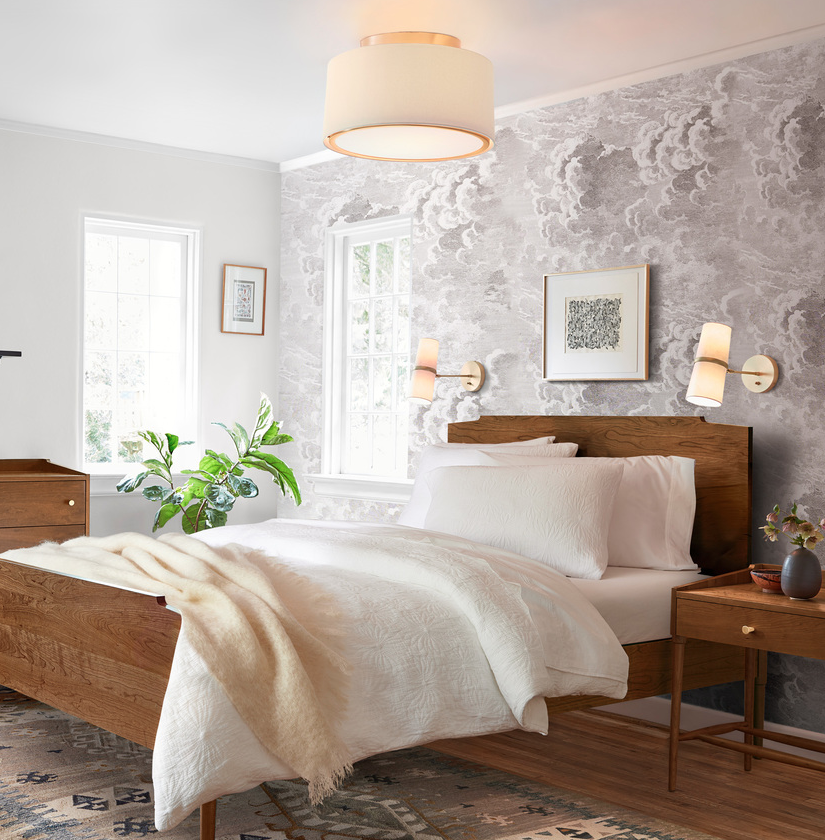


Great post! I needed this a month ago, my electrician installed recessed LED in my living room with 4K and I was horrified at how bright/ cool the lighting was he also didn’t put in the correct dimmer for the LED lights. My walls are black and built ins are white. Needles to say he’s coming back to install lighting with a lower K and the correct dimmer switch. Now I know I can ask him to bring 2700k-3000k so I can ensure the ambiance is perfect.
It had been a while since I shopped for a bulb but there was a time when you had to make sure the LED bulb could be dimmed. In other words you couldn’t just put in a dimmer and expect the LED bulb to dim. Like I said times may have changed. One other thing, I received free LED from the local electric company. What a gift! I discovered that the package said they could not be used in an enclosed fixture. Something else to check out when buying a bulb.